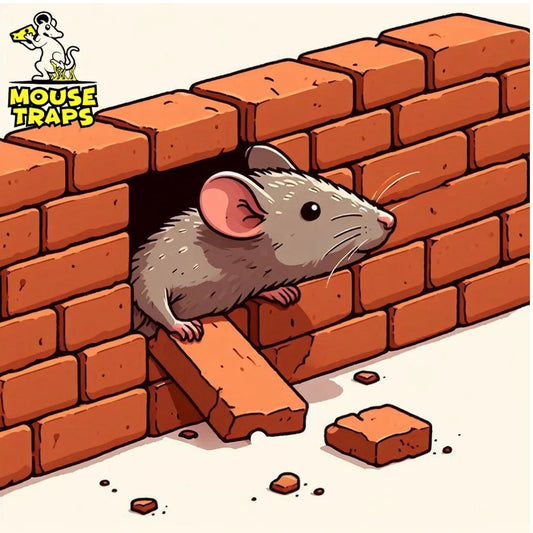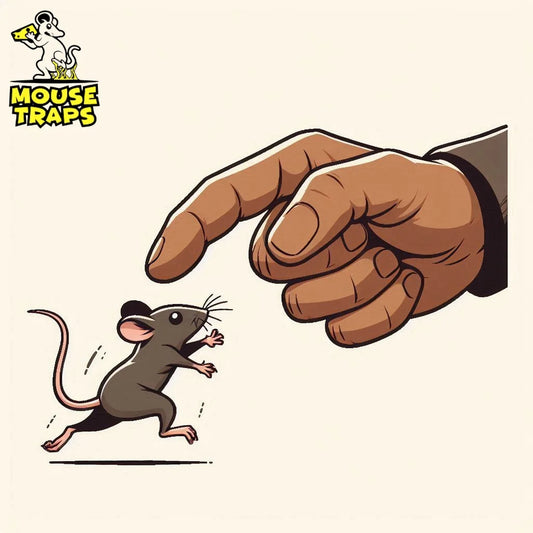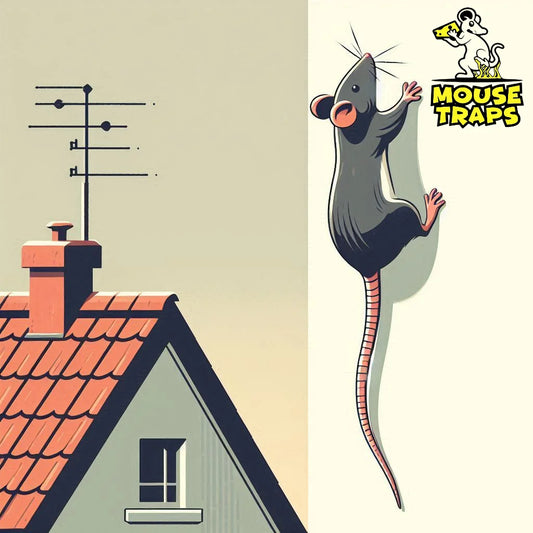Introduction:
In the serene countryside of the UK, it's not uncommon to stumble upon an abandoned building or derelict property. These old buildings, with their history and mysterious past present an issue; they can attract rats. Rats especially are known for making use of these abandoned areas transforming them into places for breeding and creating problems for people living nearby. However do not worry, as this detailed manual will delve into ways to prevent rats from making homes, in these locations by using mouse traps.

Understanding the Rat Problem:
The Perils of Rat Infestations:
Rats are not just a nuisance; they pose serious health risks and can cause extensive property damage. Their tendency to chew on things can cause damage, to the insulation, wiring and structural components of a building. Additionally rats can spread diseases like leptospirosis, hantavirus and salmonellosis which're harmful, to both humans and pets.
Why Abandoned Buildings Attract Rats?
Abandoned buildings offer the perfect environment for rats: shelter, food sources, and safety from predators. Overgrown vegetation, open entry points, and the lack of human presence make these places irresistible to rodents.

Signs of a Rat Infestation:
Identifying a rat infestation early is crucial. Look out for indicators such, as droppings, chew marks, materials used for oily trails, on walls and floors. When you spot any of these signs it's a signal that action needs to be taken.
The Role of Mouse Traps in Rat Control:
Why Mouse Traps are Effective?
Mouse traps, despite their name, are effective tools for catching rats. They are a cost-effective, non-toxic solution that can be strategically placed to target high-traffic areas for rodents.
Types of Mouse Traps:
There are several types of mouse traps available, each with its own advantages and best-use scenarios:
- Snap Traps: Traditional and effective, these traps are designed to kill instantly.
- Electronic Traps: These traps deliver a fatal electric shock to the rodent.
- Glue Traps: While controversial, glue traps can be effective in capturing rats.
- Live Traps: These humane traps allow for the capture and release of rodents.

Strategic Placement of Mouse Traps:
Placement is key to the effectiveness of mouse traps. Here are some tips:
- Identify Hotspots: Look for signs of activity and place traps along walls and in dark corners.
- Use Bait Wisely: Peanut butter, chocolate, and bacon are excellent baits.
- Set Multiple Traps: Increase your chances of success by using several traps in different locations.

Comprehensive Rat Prevention Strategies:
Sealing Entry Points:
One of the most effective ways to prevent rats from entering an abandoned building is to seal all possible entry points. Rats can squeeze through incredibly small gaps, so it's essential to inspect the property thoroughly and seal any cracks or holes with materials like steel wool, caulk, or hardware cloth.
Removing Food Sources:
Rats are opportunistic feeders, and they will consume almost anything. Removing potential food sources can deter them from nesting in your property. This includes:
- Clearing Debris: Regularly remove trash, fallen fruits, and other organic materials.
- Securing Bins: Use rat-proof bins with tight-fitting lids for waste disposal.
- Eliminating Standing Water: Ensure there are no leaks or standing water that rats can drink from.

Maintaining Clean Surroundings:
A well-maintained property is less attractive to rats. Keep the grass trimmed, remove clutter, and regularly inspect and maintain the building to prevent it from becoming an appealing home for rodents.
Professional Pest Control Services:
For severe infestations, professional pest control services are often necessary. These experts can provide more effective and long-term solutions, such as baiting programs and structural repairs.

Real-Life Case Studies and Anecdotes:
Case Study: The Derelict Barn in Yorkshire:
In Yorkshire, an old barn left abandoned for years became a significant rat problem for the nearby village. Residents noticed increased rat activity and reported health concerns. A comprehensive plan involving the placement of multiple mouse traps, sealing entry points, and regular maintenance successfully eradicated the infestation within six months.
Anecdote: The Urban Warehouse:
A warehouse in London, left unused due to a business closure, saw a sudden spike in rat population. The landlord used traps and regular checks along, with hiring pest control experts to decrease the number of rats and stop any future infestations.
Expert Insights: Interview with a Pest Control Specialist:
According to John Smith, a seasoned pest control specialist, "The key to effective rat control is a combination of exclusion, sanitation, and trapping. Mouse traps, when used correctly, can be highly effective in controlling rat populations in abandoned buildings."

Research Findings:
Studies have shown that integrated pest management (IPM) strategies, which combine various control methods like traps, exclusion, and sanitation, are the most effective in managing rodent populations. This holistic approach ensures that the problem is addressed from multiple angles, reducing the likelihood of recurrence.
Addressing Counterarguments:
Are Mouse Traps Humane?
One common concern is the humaneness of mouse traps. While traditional snap traps can be lethal, there are humane options available, such as live traps, that allow for the safe capture and release of rodents.
Effectiveness Compared to Poison:
Some argue that poison is more effective than traps. However, poisons pose significant risks to pets, children, and wildlife. Traps provide a safer, more controlled solution without the environmental hazards associated with rodenticides.
The Challenge of Large Infestations:
In cases of large infestations, traps alone may not suffice. It's important to use traps as part of a broader IPM strategy that includes exclusion, sanitation, and professional pest control services.
FAQs:
Conclusion:
Handling rat problems, in buildings and rundown properties involves a strategy that blends exclusion, cleanliness and the efficient use of traps. By grasping how rats behave and carrying out a pest management scheme you can safeguard both your property and well being from the threats posed by these pests. Keep in mind that staying on top of rat control requires attentiveness, perseverance and a thought out approach. Armed with these methods and tactics you can combat rat infestations successfully. Reclaim areas, in a safe and impactful manner.




